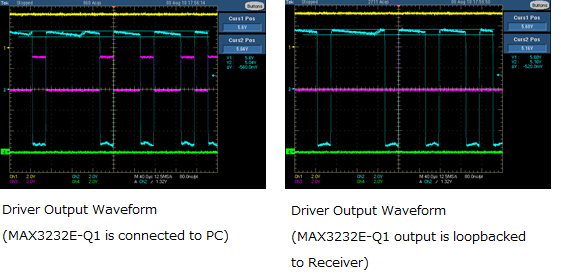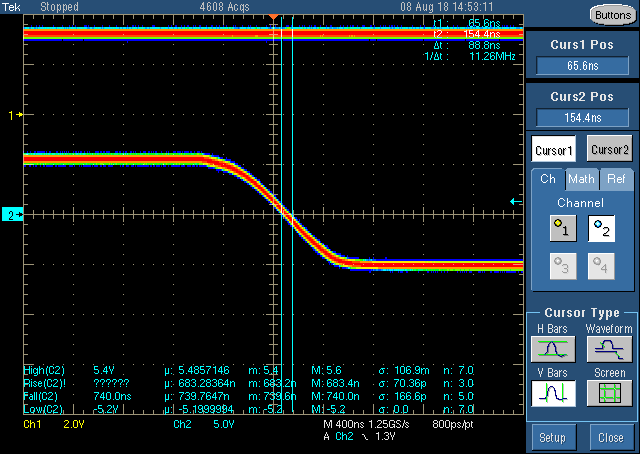[ MAX3232E-Q1 ] Waveforms
Hi,
My customer has been evaluating MAX3232E-Q1 on their board.
Can you help to review their waveforms as below?
<Q1: Voltage Bump on each High and Low>:
As you can see, the high and low level are dropped a bit while maintaining its level.
If it's measure without any load condition (open), no voltage drop can be seen.
Is this expected?
<Q2: Jitter>:
The jitter is somewhere around 90nS.
Is this what we expect?
Are there any jitter requirements on the industrial standard?
Thanks,
Ken

